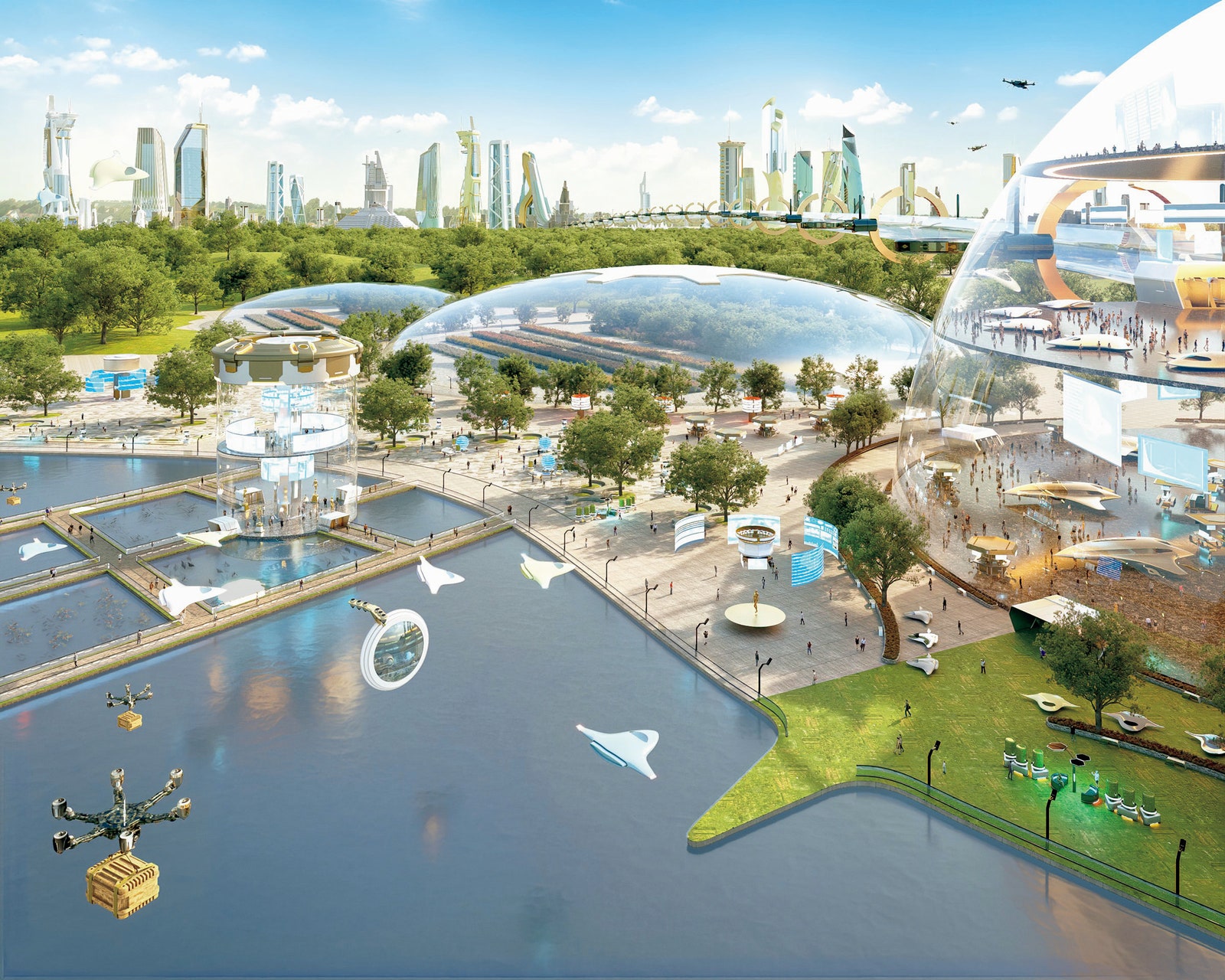Haut is a 21-story timber-hybrid high-rise completed in Amsterdam in 2022. It was designed by the British engineering collective Arup and Team V, a Dutch architecture firm. Haut has 55 apartments, a bicycle parking area, an underground parking garage, and an urban garden. It was the first residential building in the Netherlands to receive certification from the sustainability rating system BREEAM. The fusion of timber and hybrid technology has minimized the building’s ecological impact. Timber-hybrid high-rises have increased in number around the world and offer a model for construction with a lower carbon footprint. Port Plus, a high-rise made entirely of wood, was constructed in Yokohama, Japan, in March 2022.
Tokyo Bay eSG Project
Tokyo, Japan
IMAGE: TOKYO BAY ESG PROJECT
The development of Tokyo Bay is essential to the city’s future. In 2021, the Office of the Governor for Policy Planning announced the Tokyo Bay eSG Project, an urban development scheme in the Tokyo Waterfront City and Central Breakwater areas. The project envisions a sustainable city that combines nature and convenience. Every year, the project organizers appeal to the public for projects based on themes such as “environmental improvement and resource circulation” and “cutting-edge renewable energy.” To date, they have chosen projects from companies working on cultivating microalgae and producing hydrogen from seawater. Tokyo Bay promises to be an incubation site for the future of regenerative cities.
The Regenerative City
In July 2024, the Ellen MacArthur Foundation, a global organization that promotes a circular economy, published its Building Prosperity report. It described the shift to a circular economy in European architecture and cities and presented six strategies that will be crucial for creating circular cities: redeveloping brownfield sites (land that was once used for industry but, due to soil contamination, cannot be redeveloped or sold); converting vacant commercial buildings; employing material-efficient design; using low-impact materials; expanding green-blue spaces; and increasing tree canopies. The report also presents examples of these strategies being deployed, such as by the investment firm Ginkgo, which specializes in the restoration and redevelopment of brownfield sites in Europe, and the timber-hybrid high-rise Haut, described above.
Another area of focus, in addition to these six strategies, is making use of the ecosystems found in cities. The engineering collective Arup, which was involved in the construction of Haut and also contributed to the Building Prosperity report, released another report on the theme of urban rewilding in 2023 and focused on regenerative design. Arup’s report uses the Billion Oyster Project as an example of urban rewilding. That project’s goal is to restore 1 billion oysters to New York harbor by 2035 as part of an effort to reduce the impact of erosion from torrential rains and to protect the coastline from high tides and storm surges. Another example from New York is Brooklyn Grange, featured above, which aims to lower the impact of rainwater on New York’s sewer system through a network of rooftop green spaces.
The circular city movement is not limited to North America and Europe; it is also attracting interest in Asia. Kongjian Yu, the founder of the Chinese architecture and landscaping firm Turenscape, has proposed the idea of sponge cities, an approach to urban planning that involves increasing green spaces to collect rainwater to prepare for water shortages due to climate change. In an interview with WIRED, Yu said, “The sponge city is an urgent, immediate solution that can adapt cities to climate change, to heat, to floods, and to drought.”










